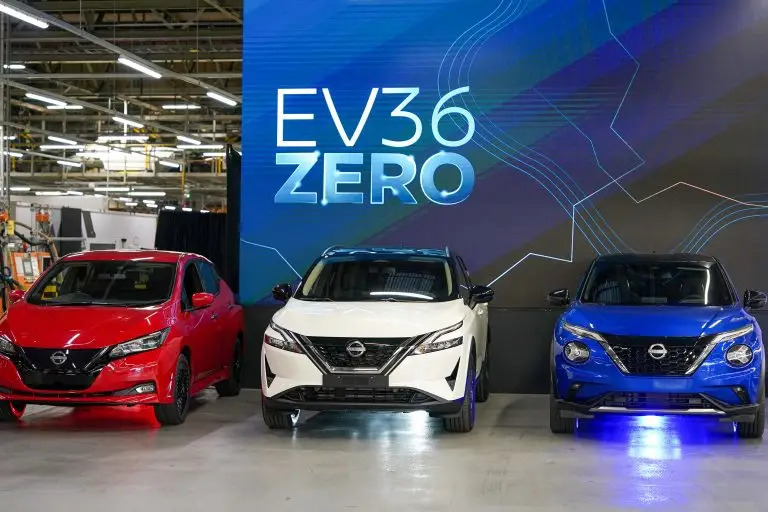[동아시아포럼] 산업정책 2.0과 新보호무역주의, 아시아 국가의 전략은?
미국·유럽 등 주요국 정부, 보조금 지원 등 산업에 대한 개입 확대 국가간 갈등 이어지면서 규칙 기반 무역 시스템에 대한 의문 제기 글로벌 무역 공정성 훼손되면 더 이상 국제사회 지지받기 어려워
[동아시아포럼]은 EAST ASIA FORUM에서 전하는 동아시아 정책 동향을 담았습니다. EAST ASIA FORUM은 오스트레일리아 국립대학교(Australia National University) 크로퍼드 공공정책대학(Crawford School of Public Policy) 산하의 공공정책과 관련된 정치, 경제, 비즈니스, 법률, 안보, 국제관계에 대한 연구·분석 플랫폼입니다. 저희 폴리시코리아(The Policy Korea)와 영어 원문 공개 조건으로 콘텐츠 제휴가 진행 중입니다.
최근 10년간 선진국들이 자국 산업에 대한 개입을 확대하면서 각국의 산업정책이 다시금 주목받고 있다. 선진국들이 자국 산업에 대한 개입을 확대하는 데는 여러 가지 이유가 있다. 이 중 특기할 만한 점은 지정학적 갈등과 분열이 이어지면서 각국 정부가 글로벌 무역의 공정성과 개방성에 대해 의심을 갖기 시작했다는 점이다.

탄소중립·빈부격차 등 현안 해결 위해 정부의 개입 확대
먼저 미국, 호주에서는 탄소세, 배출권 거래제 등 가격 기반의 탄소 중립 정책이 실패하면서 탈탄소화·넷제로 핵심기술의 수요와 공급을 늘리는 산업정책이 채택됐고 이 과정에서 정부의 개입이 확대됐다. 다른 선진국에서도 탈산업화로 인해 계층 간 불평등이 심화됐다는 지적이 나오자 이를 해결하기 위한 대안으로 제조업의 부흥과 일자리 창출을 위한 인센티브 정책이 새롭게 추진되고 있다.
최근 세계 경제에서 위상이 높아지고 있는 개발도상국에서도 산업정책에 대한 새로운 시도가 이어지고 있다. 인도네시아는 동맹국들과 함께 핵심광물에 대한 수출 제한 기반으로 한 전방산업화(downstreaming) 정책을 추진하고 있는데 이는 자원이 풍족한 국가들에 있어 새로운 산업 모델이 되고 있다. 인도는 ‘메이크 인 인디아(Make in India)’ 정책을 통해 원조, 수입 등 글로벌 공급망에 의존하지 않고 독자적인 제조업 기반을 구축하기 위해 수입대체산업화 전략을 추진하고 있다.
각국 정부의 산업정책은 자국의 산업계획을 수립·조정하는 차원에 초점을 두고 성장 잠재력이 큰 분야를 적절히 선정해 지원한다면 규칙 기반 무역 시스템(rules-based trading system)이 강조하는 공정 경쟁의 원칙을 훼손하지 않는 건전한 개입이 될 수 있다. 하지만 각국 정부가 국가 간 비교우위 산업이 발전하는 국제 무역의 원칙을 지키지 않고 자국의 산업성장을 가속화하는 데만 초점을 둘 경우에는 문제가 발생할 가능성이 높다.
특히 개발도상국의 경우 산업정책에 투입되는 공공재정이 효용성 있게 집행되고 있는지 신중히 평가해야 한다. 자국의 산업이 초기 단계에 머물러 있는 상황에서 시장 점유율을 확보하거나 선도기업의 점유율을 뺏어오기 위해 국가 재정을 투입할 때는 손실이 클 수밖에 없다. 여기에 기대비용까지 고려하면 손실은 더욱 커진다. 초기 산업을 육성하기 위해 투입된 비용을 교통·통신 인프라부터 교육·보건 시스템에 투자할 때 효용가치가 더 높아지기 때문이다. 또한 산업정책이 시장 경제에 과도하게 개입하지 않는다면 특정 국가가 실제 경쟁 우위를 가진 산업에 민간 투자가 늘어나 유망한 산업의 자본 확보에도 긍정적인 영향을 미칠 것으로 보인다.
미국, 미·중 갈등 장기화에 칩스법 등 보호무역주의 강화
현재의 글로벌 무역 시스템은, 적어도 선진국에서는 공정과 평등을 훼손하는 산업정책은 사라지고 세계무역기구(WTO)가 왜곡된 산업정책에 대한 규제를 할 것이라는 전제 하에 마련됐다. 하지만 최근 선진국들이 자국의 산업을 보호·육성하는 데 주력하면서 현행 시스템은 난관에 봉착했다. 장기적으로 미국, 유럽 등 북대서양 국가들이 대규모 보조금 정책을 도입한 데 따른 영향을 예측하기는 어려우나, 단기적으로는 WTO가 역할을 하지 못하는 사이 보호무역주의와 국가 간 보복이 급증하면서 미·중 갈등과 러시아-우크라이나 전쟁 이후 글로벌 경제의 분열을 가속화할 것이란 우려가 제기되고 있다.
이런 가운데 아시아 국가들은 미국의 산업정책이 자국의 경제성장에 미치는 영향에 대해 우려하고 있다. 그간 미국은 막대한 재정, 거대한 시장, 세계 최고 수준의 R&D 역량 등을 기반으로 특정 산업 분야에서 글로벌 투자의 상당 부분을 확보해 왔다. 하지만 최근 자국 보호무역 정책으로 전환한 미국은 무역 파트너와 우호국들에 미국이 주도하는 공급망과 스탠다드에 참여하도록 요구하고 있다. 미국의 요구를 충족시키지 못할 경우, 미국 시장 진입에 많은 제약이 따르게 된다. 특히 미국은 경쟁국인 중국의 견제하기 위해 글로벌 공급망에서 중국을 고립시키는 전략을 채택하고 이에 동참하도록 요구하고 있다. 일례로 지난해 시행된 ‘칩스법(CHIPS and Science Act of 2022)’의 경우 미국에서 반도체 보조금을 받는 기업은 향후 중국에서 반도체 생산 능력을 5% 이상 늘릴 수 없도록 했다.
그동안 전 세계 국가들과 WTO 등 관련기구들은 공정한 글로벌 무역 시스템을 안착시키기 위해 정치적으로 많은 노력을 해 왔다. 하지만 아시아 기업들이 자국 정부로부터 강력한 지원을 받은 주요국 기업과의 경쟁에서 밀린다면 더 이상 규칙 기반 무역시스템을 강화하기 위한 국제사회의 지지를 이끌어내기는 어려울 것으로 보인다. 비록 미국, 유럽 등이 주도하는 현재의 무역시장이 아시아 국가들에게 불리하게 작용할 수는 있지만 아시아의 수출 주도 성장모델은 여전히 발전 가능성이 크다. 특히 개발도상국의 경우 수출 주도 성장모델이 수입대체산업화의 함정을 피하면서 글로벌 경쟁력을 확보하는데 유효한 전략이 될 것으로 보인다.
원문의 저자는 호주국립대학교(The Austrailia National University, ANU) 동아시아포럼(EAF) 편집위원회입니다.
The arrival of industrial policy 2.0
e past decade has seen a remarkable resurgence in the popularity of industrial policy in the developed world.

There are a number of reasons behind the turn to state intervention in developed economies. Most notable among them, the fragmenting geopolitical environment has led governments to be suspicious of openness to international trade. The political failure in countries like the United States and Australia of first-best, price-based policies to address carbon emissions has also encouraged the adoption of second-best industrial policies to boost the supply of, and demand for, technologies that will be crucial to reducing carbon emissions and achieving net zero goals. In addition, a pronounced and widening inequality in developed countries has been blamed on de-industrialisation, and the solution offered has been new incentives to revive the manufacturing sector and create jobs.
In middle income countries, there is burgeoning confidence about their role in the global economy and experiments in industrial policy have gained new prominence. In Indonesia, President Joko Widodo and his key allies paint their ‘downstreaming’ policy, based upon bans of the export of ‘critical minerals’, as a model of industrialisation for other resource-rich countries. As India tries to turn Prime Minister Narendra Modi’s ‘Make in India’ campaign from slogan into policy, the appeal of import substitution industrialisation, as opposed to integration into global production chains, is growing.
Government planning and coordination, and the judicious use of support for industries with organic growth potential, can be a sound intervention that need not distort fair play between nations within the framework of rules-based trade. As we have highlighted in these pages recently, the trouble comes when governments seek to take shortcuts to industrialisation that push back against, rather than abet, shifts in markets and the development of comparative advantage among countries.
In developing countries especially, the costs of industrial policy need to be weighed up carefully. Every dollar spent on trying to grab a share of a nascent industry, let alone seeking to steal market share from an entrenched player, is one that is lost from public investment — from transport and communications infrastructure to human-capital enhancing improvements to education and health systems — that would facilitate inflows of capital into the industries in which private investors perceive a particular country having a competitive edge.
These issues are canvassed in the latest edition of the East Asia Forum Quarterly (EAFQ), now on its way to subscribers and available for download via ANU Press.
This issue of EAFQ examines what the new enthusiasm for industrial policy activism means for the global system as well as for economies in Asia. How will industrial policy affect the ability of emerging economies in Asia to break into global value chains in manufacturing? Do measures to encourage domestic processing of raw materials help diversify production, or do they undermine the stable policy environment needed to underwrite green industrialisation?
The Quarterly explores the experience of industrial policy in major economies in the region, like the United States, China, Indonesia and India, as well as the likely impact of new industrial policies in semiconductor manufacturing, renewable energy and electric vehicles. It also takes a global view of industrial policy, looking at the effects on smaller economies in the region, what’s good and what’s bad industrial policy, and how it might affect the international system of trading rules.
In the Asian Review section, we ask what Asia needs to consider as it devises ways of governing the rise of artificial intelligence, what the impact of COVID-19 has been on human capital, and whether BRICS can really offer an alternative model of global governance in a new age of geopolitical fragmentation.
The explosion of industrial policy in the developed world poses major challenges for the global system, which was set up under the assumption that discriminatory industrial policy would fade away, at least in the developed world, and that the World Trade Organization (WTO) would discipline distortionary industrial policies. The long-term implications of the return of large-scale subsidies as a policy tool in the North Atlantic are hard to predict, but, given the paralysis in the WTO, tit-for-tat protectionism and retaliation risk splintering the global economy even further than it has been by US–China rivalry and the war in Ukraine.
As Mary Lovely observes in this week’s lead article, ‘America’s trading partners in Asia wonder what Washington’s new embrace of industrial policy means for their own development’.
‘With deep government pockets, a large domestic market and potent research and development capabilities, the United States has the economic power to capture a significant share of global investment in targeted industrial sectors. The US turn towards protectionism and its desire to shift trade to ‘like-minded’ friends raise fears that the US market will be closed to Asian exports unless US demands for common standards and supply chain configurations are met’.
Another concern for Asian suppliers is about US demands to reduce Chinese involvement in supply chains. The US CHIPS Act’s investment tax credits are framed in a way that seeks to limit links to manufacturing facilities in China.
Political support for shoring up the global trading system, a critical lynchpin for East Asian industrialisation in past decades, will only erode further if home-grown industries are seen losing out unfairly to overseas competitors that have been ‘picked as winners’ by governments in the United States and other industrial countries. Even in these apparently unpropitious international circumstances, Asia’s export-led growth model still has life in it and offers critical lessons for developing countries about why it is important for them to avoid slavishly mimicking the shift to import substituting industrial policies in the established industrial economies.



























